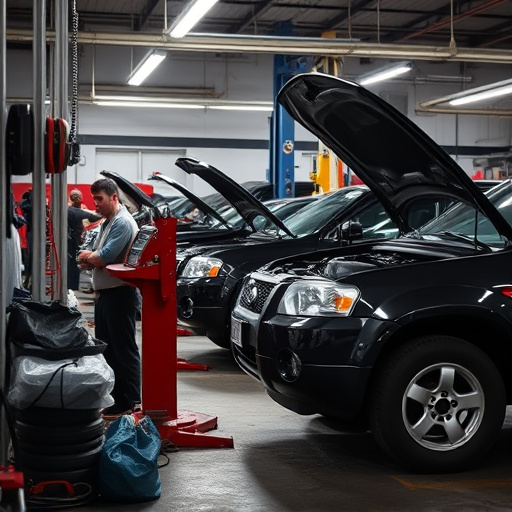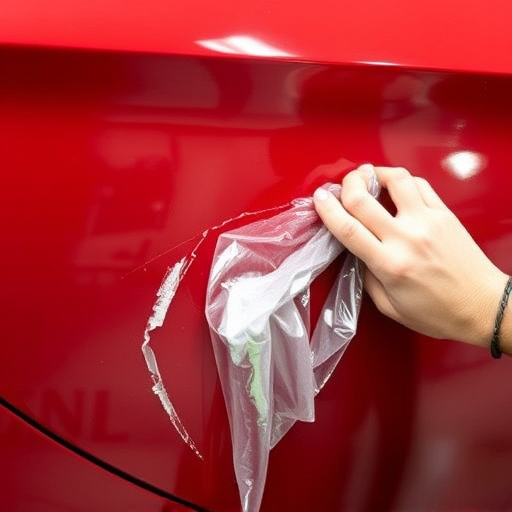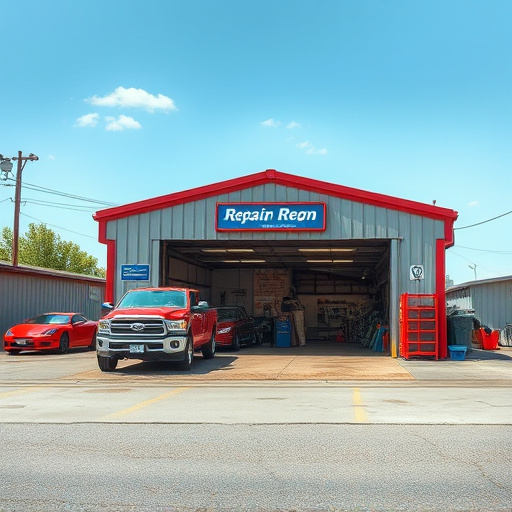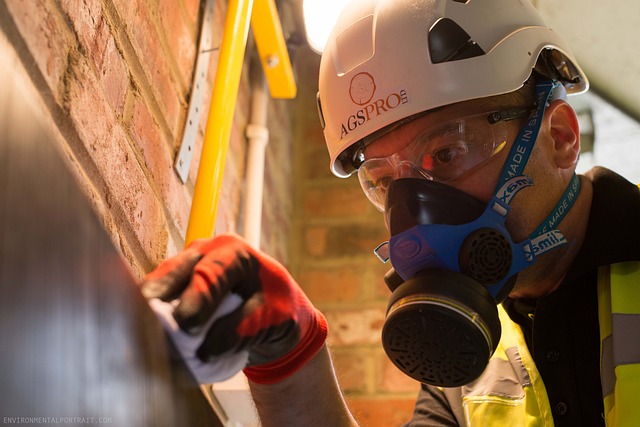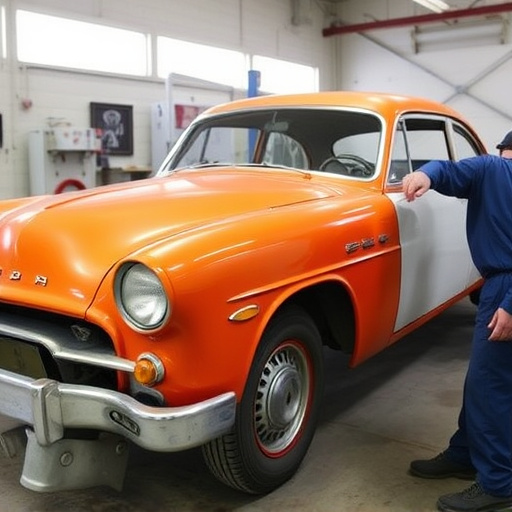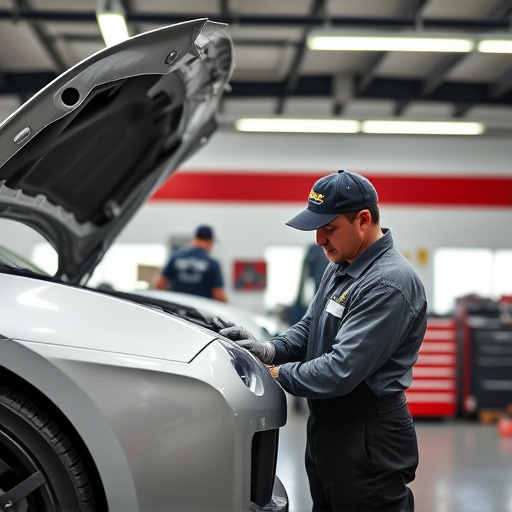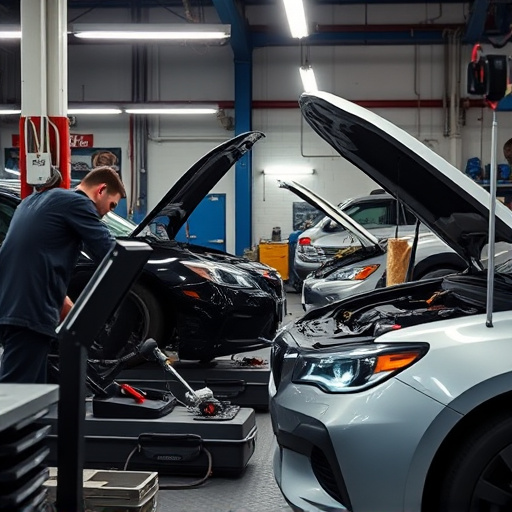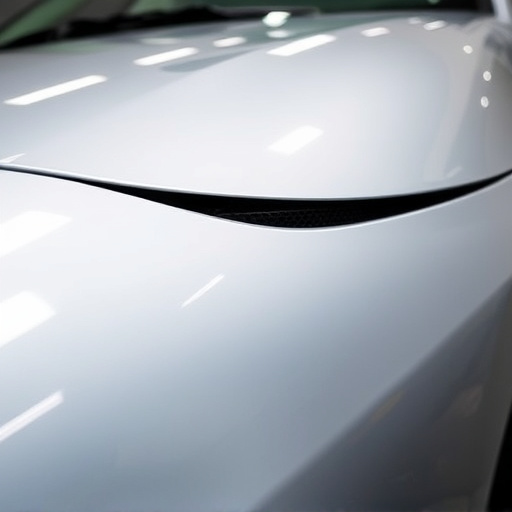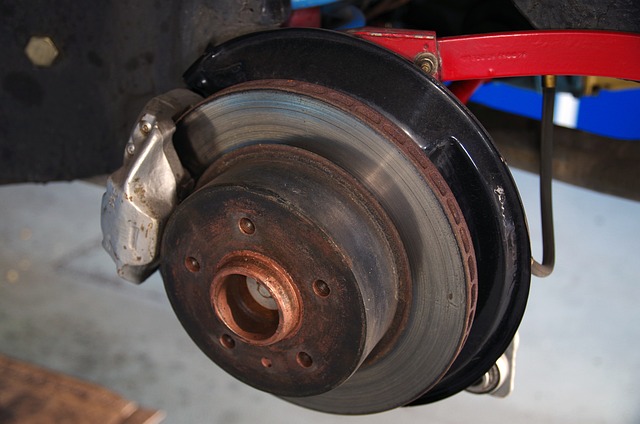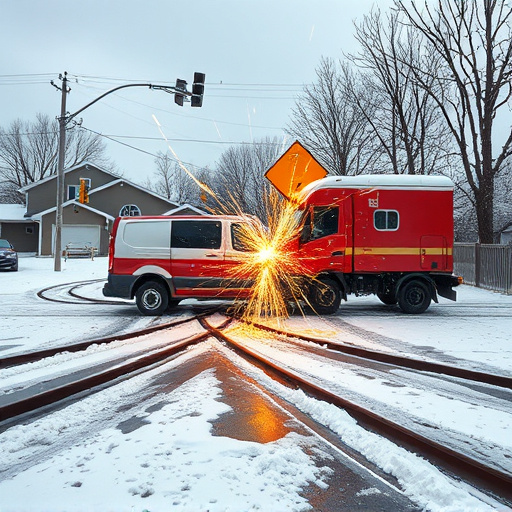The Tesla Safety Cell, a key component made from lightweight yet robust materials, enhances passenger protection in collisions. Skilled collision repair services specializing in electric vehicles are crucial for proper restoration after damage to A-pillars or B-pillars, ensuring structural integrity and preserving safety features through advanced techniques like paintless dent repair. This meticulous process bolsters vehicle stability, meets modern safety standards, and offers peace of mind for Tesla owners.
“In the realm of electric vehicle (EV) safety, Tesla’s innovative ‘Safety Cell’ structure stands out. This article delves into the intricate process of restoring and reinforcing the critical A-Pillar and B-Pillar components within the Tesla Safety Cell. After sustaining damage—be it from accidents or everyday wear—proper restoration is vital to maintain structural integrity and passenger safety. We’ll guide you through understanding the unique architecture, identifying issues, and the step-by-step process of restoring these essential pillars.”
- Understanding Tesla Safety Cell Structure
- Identifying A-Pillar and B-Pillar Damage
- Restoring and Reinforcing Safety Features
Understanding Tesla Safety Cell Structure
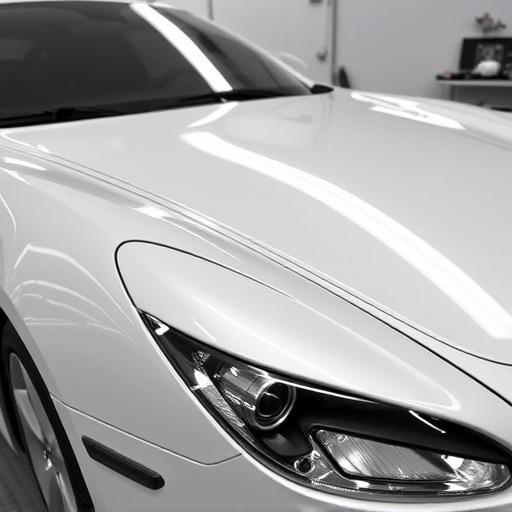
The Tesla Safety Cell is a groundbreaking innovation designed to enhance passenger protection in the event of a collision. This structural element forms the backbone of the vehicle’s cabin, incorporating advanced materials and engineering to absorb and distribute crash forces evenly. Comprising lightweight yet robust materials like aluminum and advanced composites, the safety cell is intricately integrated into the car’s design, ensuring optimal safety without compromising aesthetics or performance.
Understanding this intricate system is paramount when considering Tesla safety cell restoration after damage, whether from a rear-end collision or side impact. Skilled collision repair services specializing in electric vehicle repair are equipped to assess and address any issues with precision. Autobody repairs for the A-pillar or B-pillar—critical areas for structural integrity—require meticulous attention to detail, ensuring not only aesthetic restoration but also maintaining the safety cell’s integrity for continued passenger protection.
Identifying A-Pillar and B-Pillar Damage
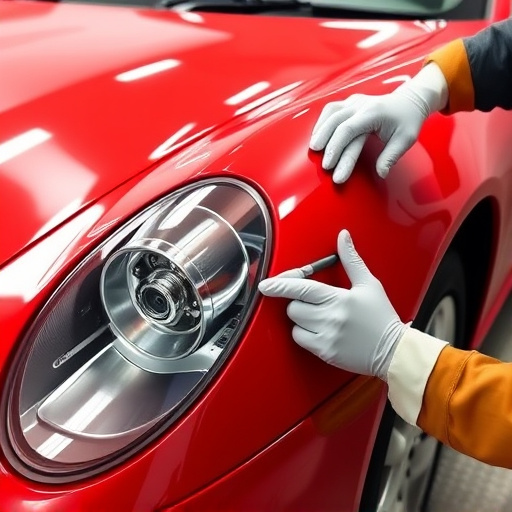
Identifying damage to a Tesla’s A-pillar or B-pillar is crucial for effective safety cell restoration. These structural components play a vital role in the vehicle’s overall rigidity and crash protection, making their integrity essential for passenger safety. Visual inspections can often reveal visible dents, creases, or misalignments, indicating potential impact zones.
In the event of an accident, these pillars may sustain hidden damage, such as cracks or deformations that are not immediately apparent. Here, advanced diagnostic tools and expertise in auto maintenance become indispensable. Using specialized techniques like paintless dent repair, professionals can uncover subtle issues, ensuring a comprehensive assessment for accurate car body repair and restoring the Tesla’s safety cell to its optimal condition.
Restoring and Reinforcing Safety Features

When undergoing Tesla safety cell restoration, it’s crucial to focus on reinforcing key structural elements, especially around the A-pillars and B-pillars. These pillars are vital for vehicle stability and passenger safety in the event of a collision. Restoring this component involves meticulous work to ensure the integrity of the vehicle’s frame. Skilled technicians carefully inspect and repair any damage, using advanced techniques to match the original specifications precisely.
The process includes not just structural repairs but also enhancing existing safety features. This might involve updating impact-absorbing materials or reinforcing existing metalwork to meet modern safety standards. A meticulous car restoration of this kind ensures that your Tesla not only looks like new but also performs at its highest level, providing peace of mind for every journey.
Tesla’s innovative safety cell structure, comprising robust A-pillars and B-pillars, is a key feature ensuring passenger protection. In the event of damage, proper restoration and reinforcement are essential for maintaining structural integrity and safety standards. By understanding the safety cell’s design and employing specialized restoration techniques, it’s possible to effectively repair and reinforce these critical components, safeguarding both passengers and vehicle value. Tesla safety cell restoration, therefore, becomes a vital process in keeping vehicles safe and reliable on the road.

